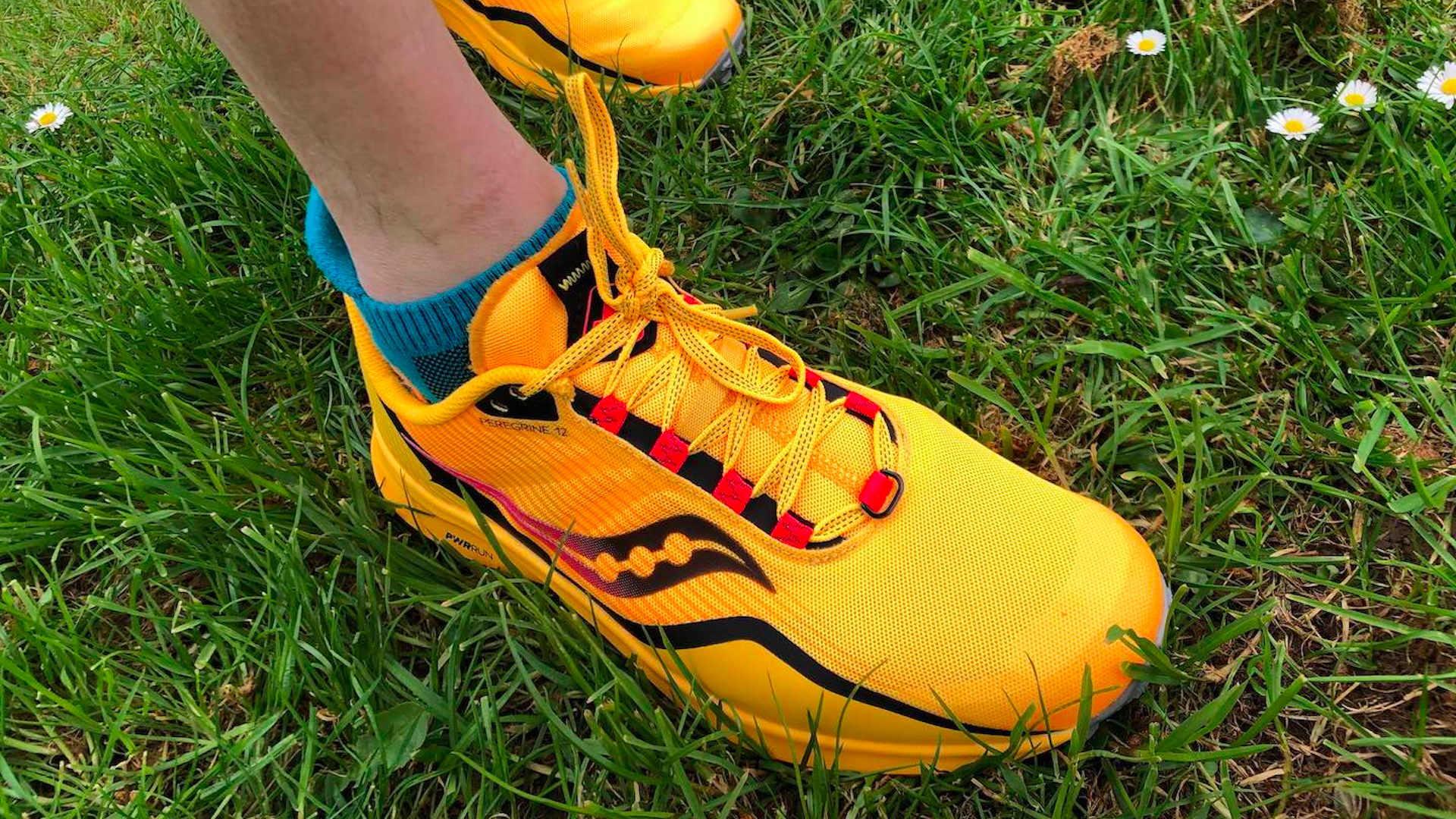Advnture Verdict
Excellent, lightweight summer running shoes, which tackle technical trails with aplomb and drain and dry very quickly after water crossings.
Pros
- +
Super light
- +
Good grip
- +
Breathable uppers
- +
Some recycled material
Cons
- -
Minimal toe protection
You can trust Advnture
Saucony Peregrine 12: first impressions

12? Really? We’re now up to the Saucony Peregrine 12? The fact that we’re now running around in the twelfth generation of the Saucony Peregrines is testimony to the enduring quality and popularity of this trail running shoe. And yes, it still comfortably stakes a claim in our latest best trail running shoes buying guide.
• RRP: $130 (US) / £130 (UK) / €150 (EU)
• Weight (per shoe): Men’s: 275g/9.7oz; Women’s: 235g/8.3oz
• Drop: 4mm
• Materials: Lightweight synthetic upper, PWRRUN midsole, EVA sockliner, PwrTrac outsole
• Colors: Men’s: Blue Ray & Acid / Campfire Story / Viz Gold & Red; Women’s: Cool Mint & Acid / Campfire Story / Viz Gold & Red
• Compatibility: Trail running across a wide variety of terrain, up to ultra distance
The minimalist 4mm heel-to-toe drop remains, which facilitates a low center of gravity and good balance on technical trails. There is a new sockliner, which entirely envelopes your foot, prevents the ingress of grit and adds to the comfort levels.
Saucony have also used some recycled material in the construction of the lightweight, minimalist upper (available in three super bright colors for men and three more for women), although they don’t specify how much.
For this latest version of the Peregrine, the designers have shaved several grams off the weight of the shoe, making a trail hoof already designed for speed even more nifty. The size of the lugs has also been reduced slightly (by 1mm), and the PwrTrac* outsole has been redesigned with a densely concentrated tread and smartly placed chevrons providing traction and braking control where it’s needed (see also: How to choose trail running shoes: drop, sole, grip, weight and more explained).
(*A “tacky, durable rubber providing exceptional traction and abrasion resistance,” according to Saucony’s own blurb.)
Saucony Peregrine 12: on the trails

I’ve put in nearly 70km of trail running in the Saucony Peregrine 12s now, on a whole variety of terrain, from tight and technical forest trails to pebble beaches, cliff-top paths ribbed with sunbaked corrugation and boggy tracks on the Mendip Hills.
They are currently my reach-for trail running shoes, and the featherweight and well-ventilated design of the main shoe make them absolutely ideal for summer running. After stream and estuary crossings they drain and dry very quickly, which is ideal for the conditions I typically run in on the South West coast.
All the latest inspiration, tips and guides to help you plan your next Advnture!
The grip is good too, though, and I’m confident I’ll be sporting them well into the fall too – the slight reduction in the size of the lugs hasn’t impacted the performance (though they will probably wear down a bit quicker).
Despite the shoe’s lightweight construction, there is a new rockplate beneath the cushioned PWRRUN midsole of the Peregrine 12, which offers really good underfoot protection from sharp stones and sticks, and yet we feel the trail feedback is also better on this new shoe (see also: the anatomy of a trail running shoe).
Durability is always a concern with such a light shoe, but my pair are showing no signs of wear and tear so far (although that’s to be expected – I will report back after some more miles). The heel cup is really quite robust, and the toe cap isn’t bad either, so they do take good care of your feet.
The lacing system is unfussy but good – the flat laces rarely if ever come undone mid run, and the holes are strong (see also: How should trail running shoes fit?). And the integrated inner socklet has done a great job of keeping grit and trail debris out.

Author of Caving, Canyoning, Coasteering…, a recently released book about all kinds of outdoor adventures around Britain, Pat has spent 20 years pursuing stories involving boots, bikes, boats, beers and bruises. En route he’s canoed Canada’s Yukon River, climbed Mont Blanc and Kilimanjaro, skied and mountain biked through the Norwegian Alps, run an ultra across the roof of Mauritius, and set short-lived records for trail-running Australia’s highest peaks and New Zealand’s Great Walks. He’s authored walking guides to Devon and Dorset, and once wrote a whole book about Toilets for Lonely Planet. Follow Pat’s escapades on Strava here and Instagram here.

